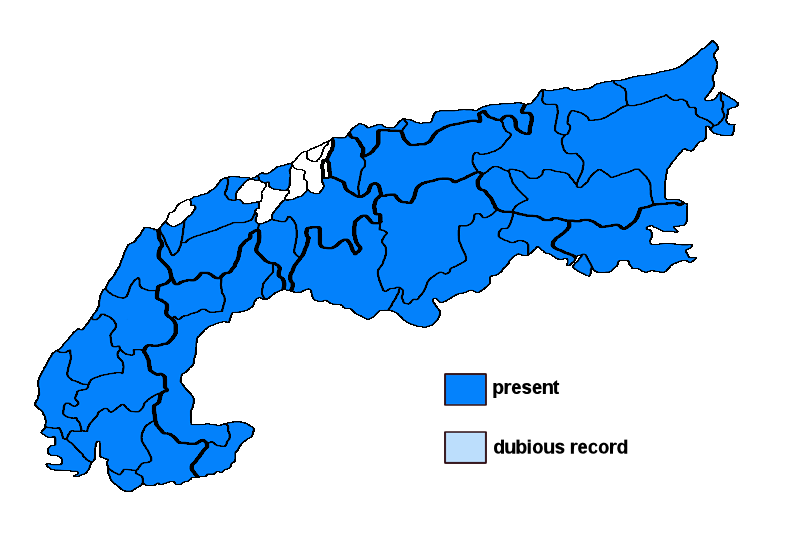Placynthium nigrum (Huds.) Gray
Syn.: Collema nigrum (Huds.) Hoffm., Lecothecium nigrum (Huds.) A. Massal., Lichen niger Huds., Pannaria nigra (Huds.) Nyl., Pannaria psotina (Nyl.) Leight., Pannularia nigra (Huds.) Nyl., Placynthium corallinoides Jatta, Placynthium siliceum Gyeln.
Lichenised.
Substrate: calciferous rocks, intermediate rocks (such as calciferous schists), siliceous rocks
Altitudinal range: from the mesomediterranean belt (potential vegetation: evergreen broad-leaved forests dominated by Quercus ilex) to the alpine belt (potential vegetation: treeless Alpine grasslands and tundras, to the lower limit of perennial snow and the equilibrium line of glaciers)
Note: a probably holarctic, subtropical to subarctic species found on more or less calciferous rocks, often near the ground in sheltered situations, from the Mediterranean belt (only in shaded-humid situations) to the mountains, also common in small urban settlements (e.g. on north-facing walls); widespread and common throughout the Alps.
Austria: Vorarlberg; Tirol; Salzburg; Kärnten; Steiermark; Oberösterreich; Niederösterreich (incl. Wien); Burgenland; Germany: Oberbayern; Schwaben; Switzerland: Bern; Graubünden; Luzern; Schwyz; Ticino; Vaud; Valais; France: Alpes-de-Haute-Provence; Haute-Alpes; Alpes-Maritimes; Drôme; Isère; Savoie; Haute-Savoie; Vaucluse; Var; Italy: Friuli; Veneto; Trentino Alto Adige; Lombardia; Piemonte; Valle d'Aosta; Liguria; Slovenia: Alpine and Pre-Alpine Slovenia; Trnovsky Gozd;





